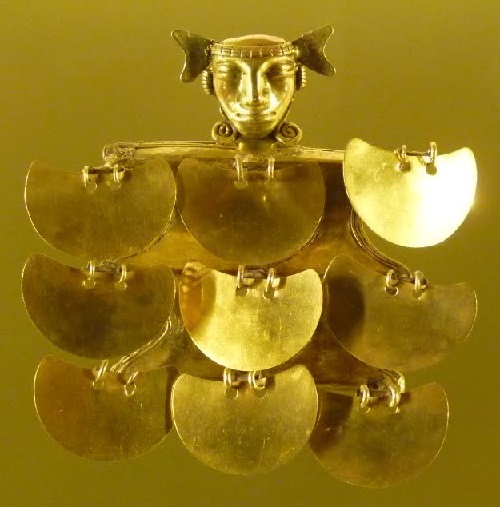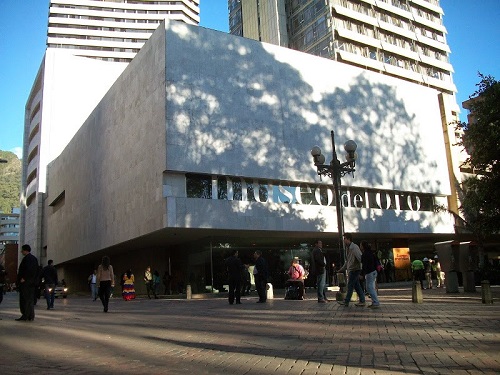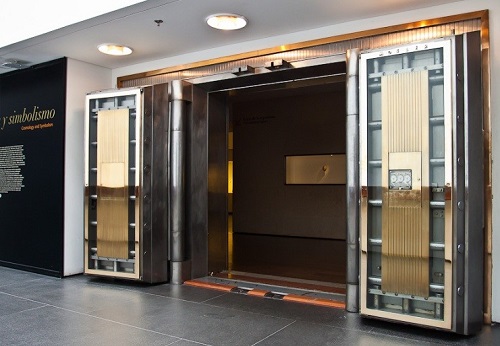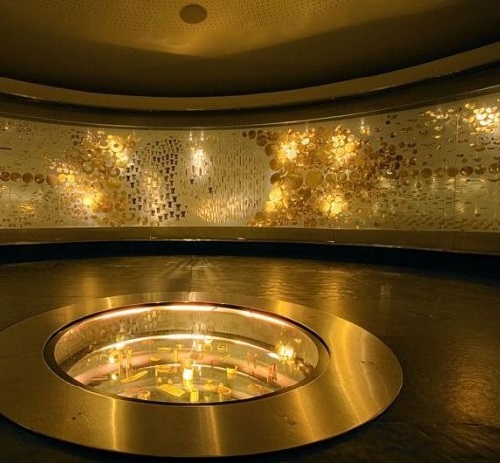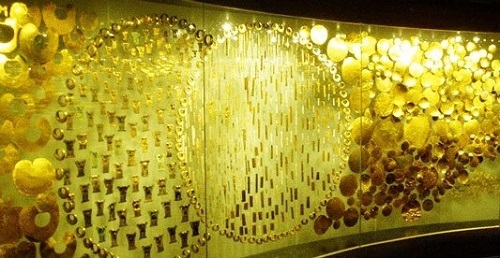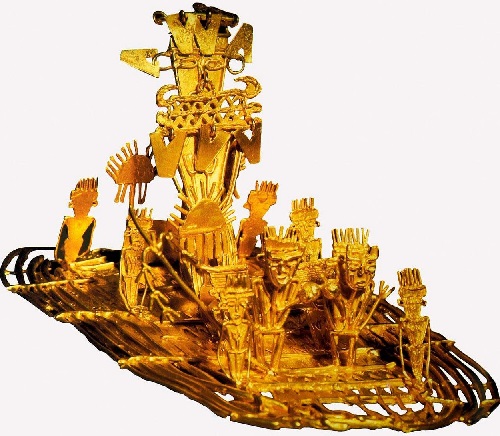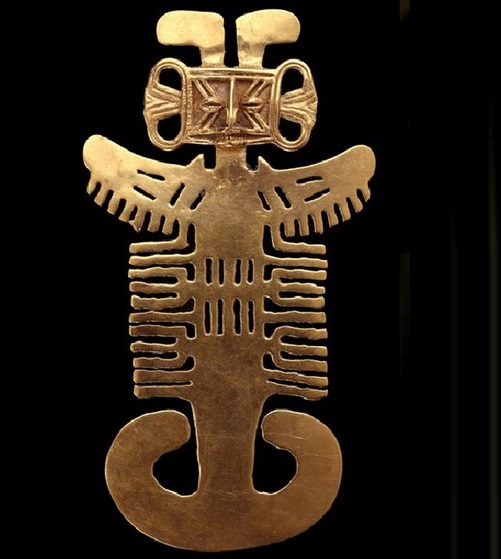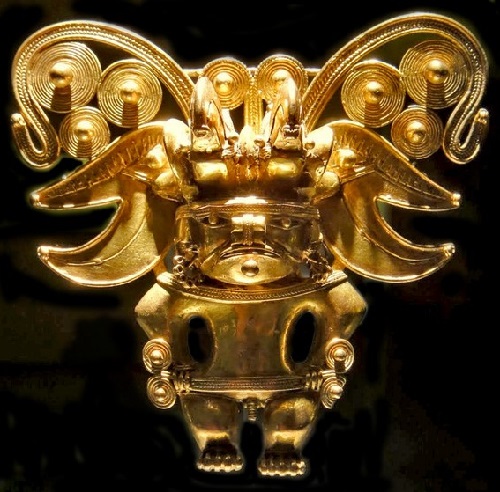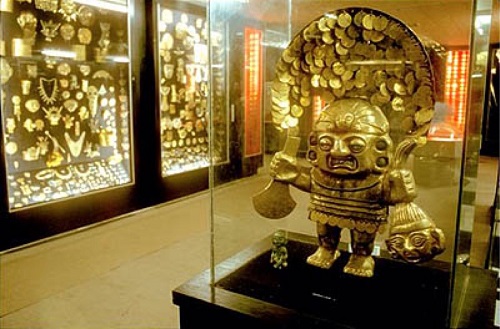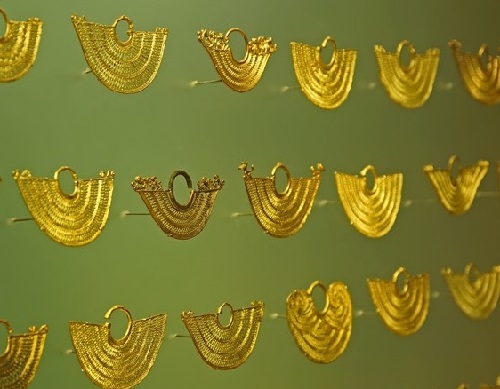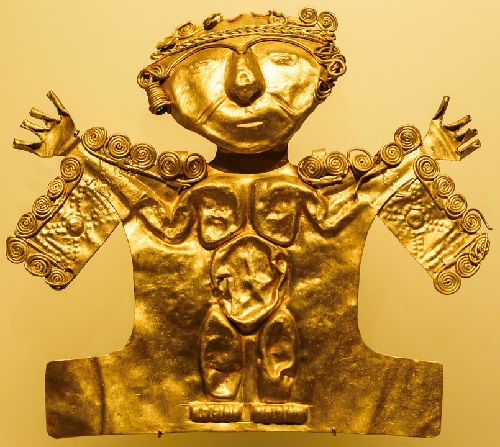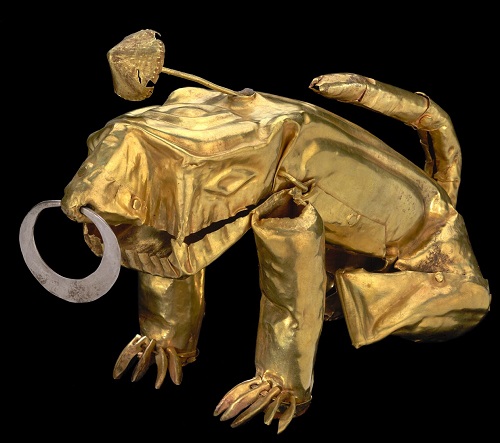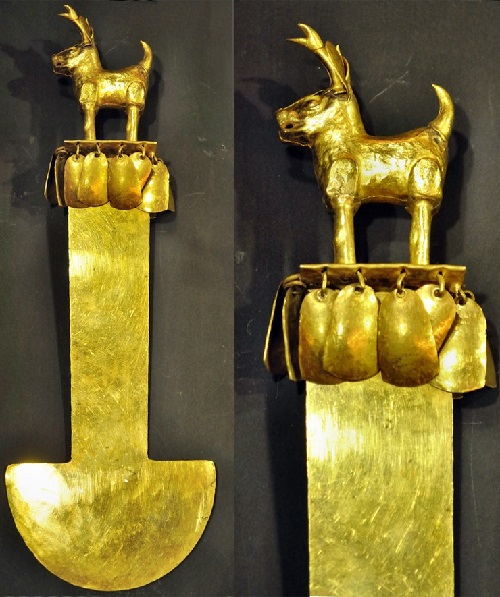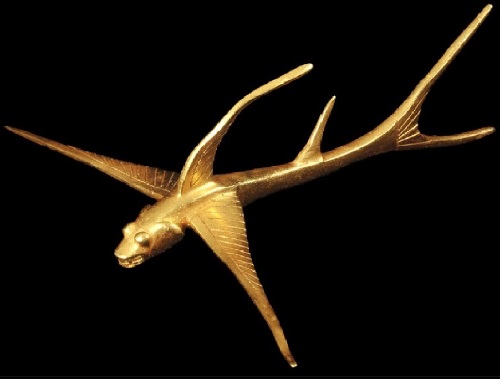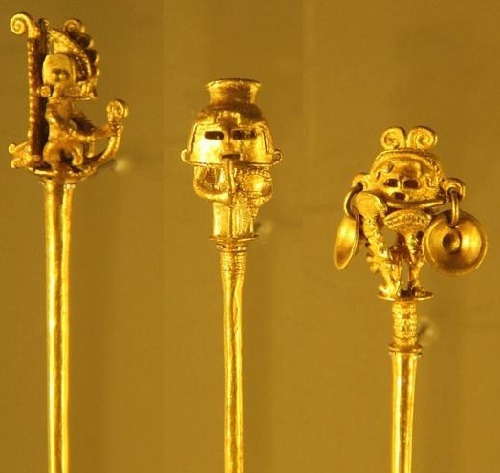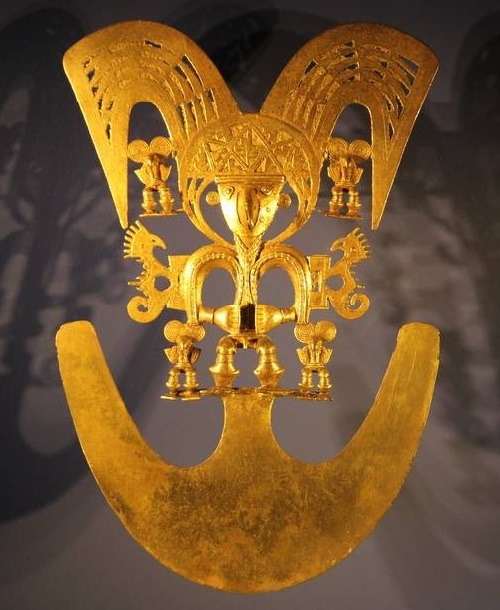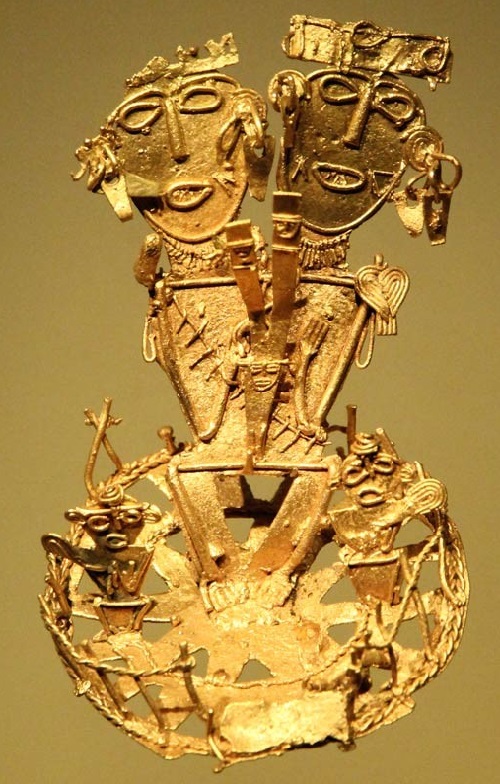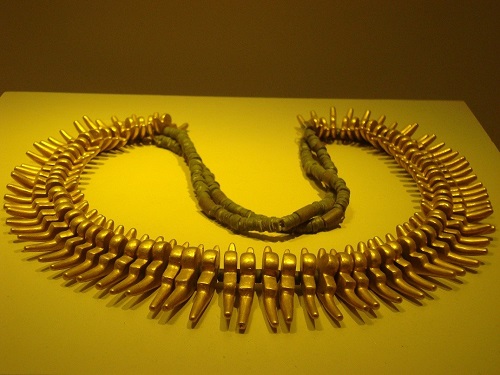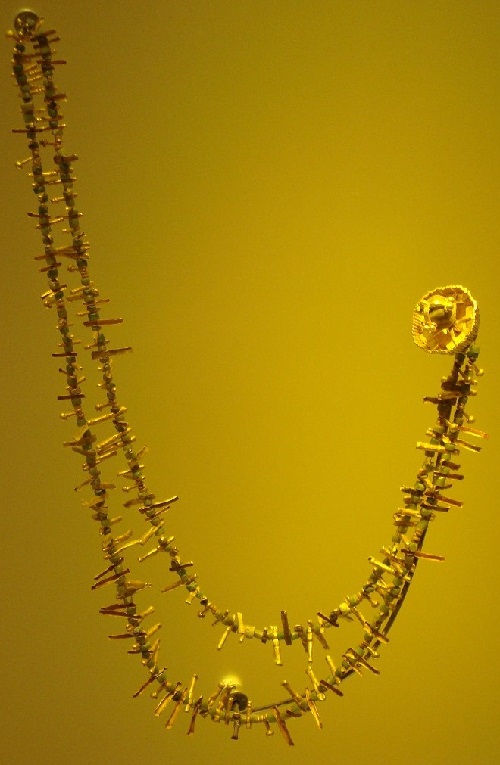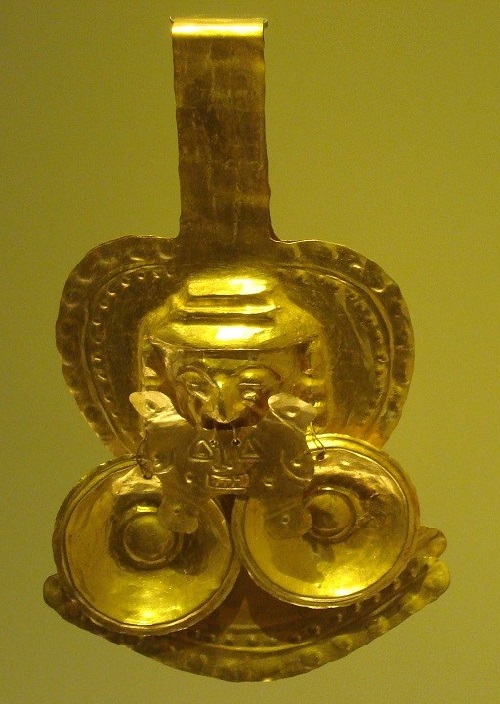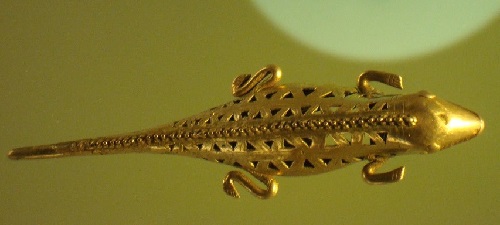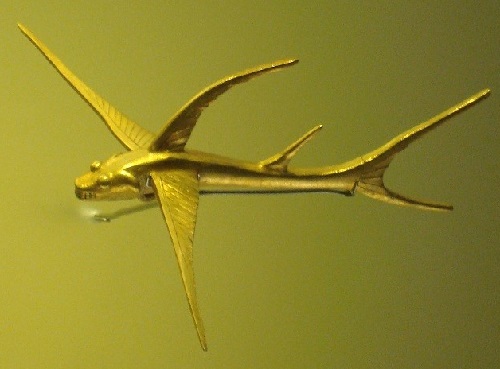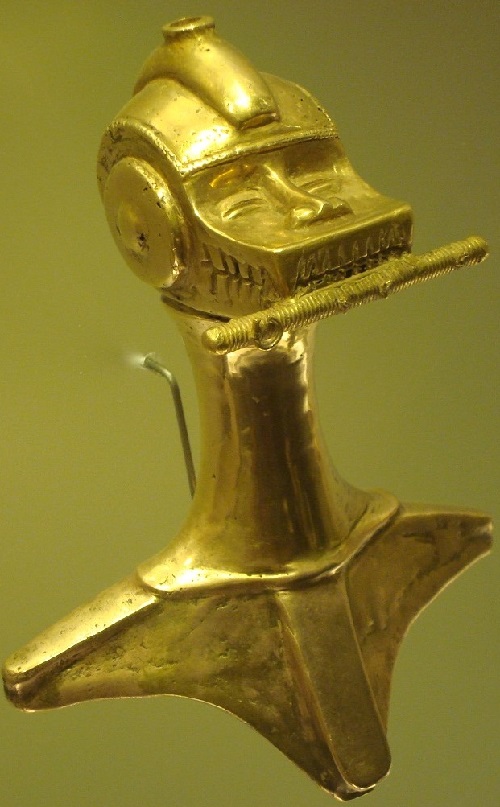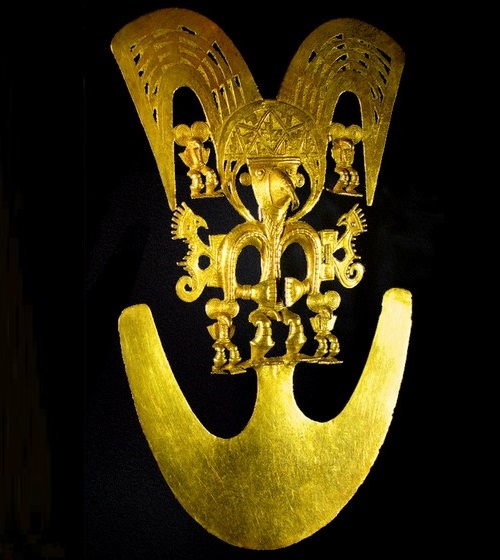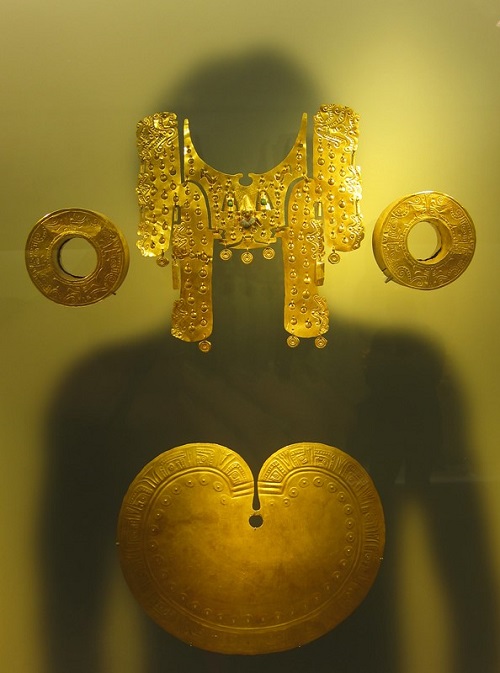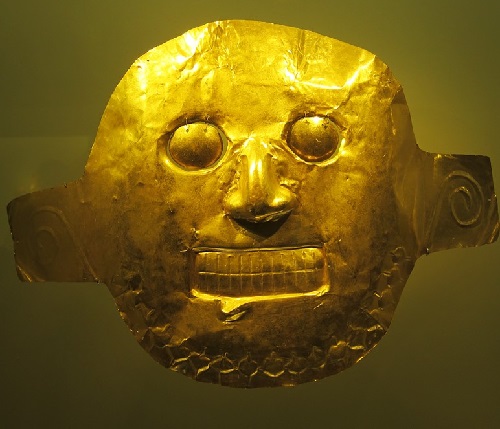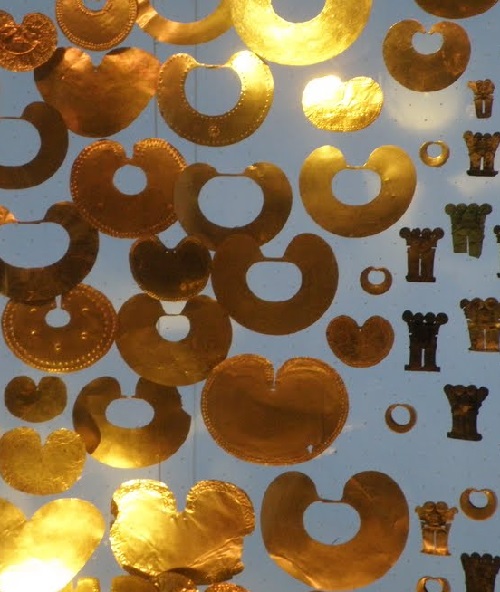Colombia Gold Museum
Colombia Gold Museum – the richest museum in the world, located in the capital of Colombia, Bogota. Museo del Oro (Gold Museum) holds within its walls thousands of unique works of art of pre-Columbian era, during which gold was considered the embodiment of the creative energy of the sun. Looking at the tremulous shine and wandering shimmer of precious exhibits, one unwittingly feels the elusive cold and involvement in these things the death of many Native American empires. How many of them were thrown out of the thirst for gold, which swept Europe – gold lured the Spaniards over the ocean, gold drove the Portuguese to the east, gold … gold … gold – that’s the only requirement white men landed on any newly discovered coast.
Gold Museum in Bogota – one of the richest museums in the world, which collected more than 29 thousand of jewellery of the art masters of the pre-Columbian era. The museum of gold was founded in 1932 and today it exhibits more than 34 thousand pieces of gold created more than five hundred years ago.
It is said that the conquistadors came on American soil, and seeing how little the natives appreciate gold, concluded that this metal should be countless in their lands. In turn, the Indians, realizing that it is this metal could divert attention from attempts of conquistadors conquer their lands and the enslavement of indigenous people, began to create the legend of the large deposits of gold on another, more remote inland areas. Thus, there is a legend of the fabulous El Dorado, which the Spaniards called El Dorado (from the Spanish word -oro- gold, literally – gilded). El Dorado later became a symbol of not found missing treasure and expeditions around the world.
Initially, relying on information obtained from the Indians, the Spaniards thought that the main gold deposits were in the Eastern Cordillera of the Colombian Andes. According to the stories, there is a town where everything was made of gold, even clothing of their settlers. In this way, Aborigines coastal regions have tried to distance themselves from the invaders, and that is why the conquistadors rushed enthusiastically to develop the inner regions of the country, often leaving aside other tasks assigned to them by the Spanish crown.
Imagination of conquistadors broke out even more when they reached the area of Guatavita – a small village and a small lake in the Andes near the city of Bogota, where lived Muiska people – part of the Chibcha tribe. On the lake with the coming to power of a new leader was held the ritual. The heir to the throne was stripped completely, and his body was smeared with a sticky clay, peppered with golden sand and put on him a large amount of gold jewellery, and together with other leaders, on a raft, they went to the middle of the lake. The highlight of the tradition was swimming heir, then all present threw gold jewelry into the lake … then returned to the shore and started the feast in honor of the new leader. Nevertheless, the actual amount of gold found in the area, was much less than conquistadors calculated.
Colombian Indians surprised the conquistadors for their ability to fuse gold with copper and platinum, probably because of that the Colombian gold was valued higher than Peruvian gold – the heirs of the Incas. They were able to produce surprisingly sophisticated jewelry, unfortunately, very few of these exhibits have reached our days. After all, the Spaniards were interested solely in weight of gold, rather than in its artistic value.
Especially valuable is the “Golden Raft”, dated 1200-1500 years BC. On the platform stands a large gold Indian chief, surrounded by 12 soldiers.
Conquistadors began the conquest Indian lands in the 16th century, they mercilessly plundered and devastated churches of Indians, not shrinking in search of gold and ruined the graves. During the period from 1537 to 1840 from Colombia was removed about 35 million (yes, millions!) Ounces of gold. There was even a new “profession” of black diggers, meaning hunters who plundered the Indian burial. Many treasures were removed in scientific purposes, a lot of foreign historians and archaeologists have been studying the pre-Columbian era. As a result, unique exhibits dispersed around the world and ended up in museums and private collections in Madrid, New York, Chicago, London, Paris, Rome, Berlin and Leipzig.
And only thanks to enthusiasts Colombia has not lost all their wealth. Among them are the brothers Vicente and Ernesto Restrepo. One hundred years ago, archaeologists and ethnographers gathered a huge collection of tribal jewellery. French Americanist Paul Rivet has initiated the creation of the museum in Bogota for the preservation and exhibition of these treasures. So in 1939, by the Bank of the Republic of Colombia was created the Gold Museum. The unique Museo del Oro is the national pride of Colombians. Museum Foundation cherishes the exhibits in the form of ingots, nuggets, utensils, coins, figurines, armor weapon, death masks, bas-reliefs, glasses and even a mummy, covered with ornaments. In the museum collection of raw emeralds there are stones weighing several kilograms.
The beginning of the exhibition presents a huge gold sink, or rather a golden replica of the old, no longer existing shell. The museum has plenty of exhibits of high jewellery art, beads and bracelets, as well as made of gold household items, fishing hooks, for example.
There are so delicate and graceful little things that it’s even difficult to believe that they have been manufactured using the most primitive tools and clay forms. Somewhere on the exhibits you can see the fingerprints of masters.
Gold Museum in Bogota not only shows treasures of glorious ancestors, but simultaneously introduces visitors to some of the customs of the Indians. On display are a lot of smaller vessels for the storage of lime and small sticks for extracting lime.
It turns out Indians chewed lime with coca leaves, but it was not the old drug, as it may seem at first glance. In the difficult conditions of high coca leaves helps relieve sleepiness and headache, lime enriches the body with minerals. An indelible impression on visitors leave the last visit to the hall of the Museum of gold, which is a huge, darkened storeroom filled with 12 thousand gold products. When the hall is lit with a bright light, to the admiring eyes of visitors appears radiant splendor.
It’s amazing how the Indians in those days with the help of primitive hand tools could produce quite complex and beautiful products. Some of them even survived fingerprints of a master. There is a version that the Indians treated red-hot gold manually. But the prints were left on clay forms and printed on the product itself during casting.
It is worth noting that the indigenous population of the country treated gold differently, it was considered a sacred metal that can collect and transmit the energy of the sun. Made of gold products are often used in everyday life and during ceremonies.
Gold in Colombia is everywhere: in different colors and qualities on men and women (men’s gold decorations are not to smaller than women’s), even the yellow flag represents the Colombian gold, symbolizing the power and wealth of the country.
masterok.livejournal.com
